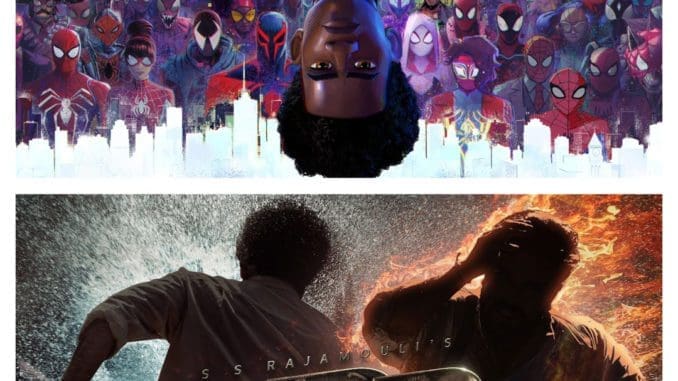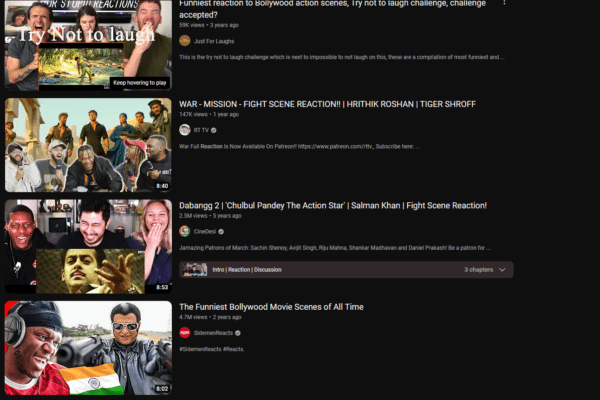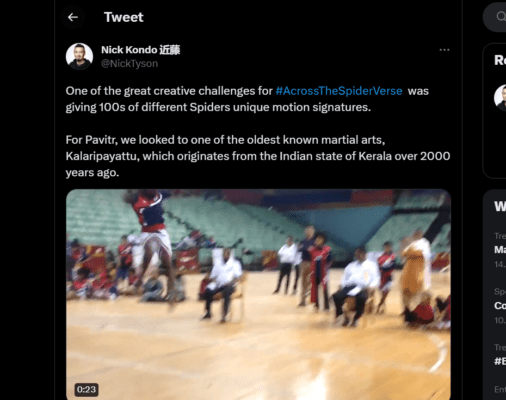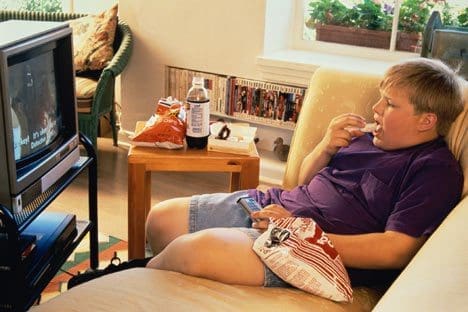
With Hollywood’s mainstream culture growing more and more conscientious of how it seeks to portray and platform minorities, displayed with the popularity of movies like Across The Spiderverse, RRR, Everything Everywhere All At Once, Parasite, Moonlight, Black Panther, etc. , a new tide of minority rep outgrowing the stereotypes that defined their roles in cinema has arrived and its appreciation begets that it’s here to stay.
Importance Of Media Representation
Media presents everyone an opportunity to be known. Conversely many people’s perception of cultures, creatures and even actions is dictated by how the media they consume seeks to portray them. This isn’t a fallacy caused by poor media literacy, it’s just the basic concept of human influence. After all, any movie, TV show, animated feature etc. are all stories written and told by human minds and no matter how fantastical they seem they will never be bereft of the human element.
We need look only as far as the extremely well documented JAWS phenomenon and the aftermath of the movie’s release as evidence for that fact. I mean hell, that movie is literally about a serial killer shark yet the brutality of the movie’s horror left a real impact on how people saw actual sharks. Therefore due to the perceptional hold mainstream media has upon the collective public conscious, representation is extremely important.

If we examine representational trends in cinema over the past century or even two centuries we witness a large amount of stereotypicalisation and bigotry prevalent in the portrayal of gender, racial, cultural and ethnic minorities. To the point where watching any movie from a decade or so ago comes with heavy caveats. Where you just put it on and get ready to cringe on through all the while you can only think to yourself, ” why did they ever think this was okay?”.
Even beyond cinema the portrayal of people in things like internet meme culture also had an impact on public perception. Just try existing as an Indian on any social media platform without one of the many jokes extrapolated from a mockery of our culture finding its way back to you. Harmless at first i’m sure but at some point it achieved genuine synonymy with our image.
Hence, representation is very important on an almost personal level. Positive representation however flawed it may be in our current cultural climate is a godsend. However it is with these flaws that debates arise, sides are taken between those who are critical and those who are unconditionally affirmative. As seen with two of the biggest pieces of Indian representation that made their way onto the big screen, RRR and Across The Spiderverse.
RRR
The situation with RRR revolved around its portrayal of the main characters and how it ends up going in line with saffronisation propaganda and some intricacies in how it went about characterising British women. Here are some resources to read up on it.
- https://www.thenewsminute.com/article/how-blockbuster-films-are-aiding-hindutva-nationalism-project-162635
- https://caravanmagazine.in/film/rajamouli-dehumanising-gond-rrr
- https://slate.com/culture/2022/06/rrr-review-indian-blockbuster-netflix-hindu-nationalism.html
However point is RRRs impact is multifaceted, it finally made the global stage treat Indian blockbuster cinema as an art form rather than a parodical VFX fiesta with people giving it’s action scenes real critical thought when previously, scenes in a similar vein received naught more than ridicule and became reduced to being a subject for humourous reaction videos on YouTube.

“I grew up listening to The Carpenters and now here I am with the Oscars. There was only one wish on my mind, so was Rajamouli’s and our families’… ‘RRR’ has to win… Pride of every Indian… must put me on the top of the world,” Keeravani said in tune to The Carpenters’ 1970s song Top of the World.
Across The Spiderverse
With Across The Spiderverse however the representational debates stemmed from a disconnect towards the character Pavitr Prabhakar who seemed to project a diasporic caricature rather than being an actual Mumbai teen. With run of the mill millennial humour and not much more to back up his relatively thin character in the movie, this critique, while understandable, seems to ignore the other facets of artistry that went into his characterization with close ties to deep cuts of Indian culture. Another classic case of both sides being correct yet seeing no common ground.

Additionally even beyond that the movie portrays the titular titular character’s, spider man’s cultural background with renewed authenticity almost never seen before, reaching the hearts of many a Afro-Latino youth in the audiences.
Conclusion
So, what do we do with this information? When both sides have valid bases for their conjectures and their critiques can be constructive yet they fail to see common ground.
Well, a solution can only be reached by the people themselves however, the fact of the matter is, pointless arguments as such can turn even constructive critique redundant. As everything gets wrapped up in a big web of endless, pointless debate it becomes very easy to invalidate even valid statements. We got this far because our grievances were validated because we voiced them with a dominant, almost unified voice. So, a solution MUST be reached, it’s not about compromise as much as it’s about understanding each other and shaping your beliefs on that basis.
And to begin that process the first step is realising that neither side here is coming from a wrong place when it comes to their basal stance on the issue.
While the new wave as positively faced as it is, is still dictated by noticeably flawed elements that need to be improved upon. It is imperative we move forward acknowledging both the good and the bad in order to keep making it better because that’s what we all deserve.




Be the first to comment